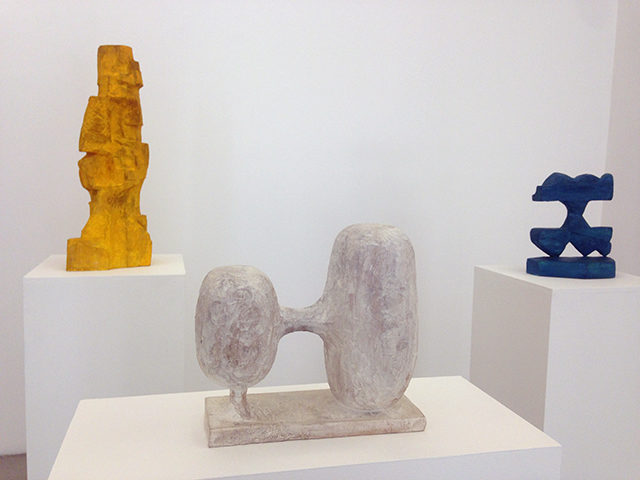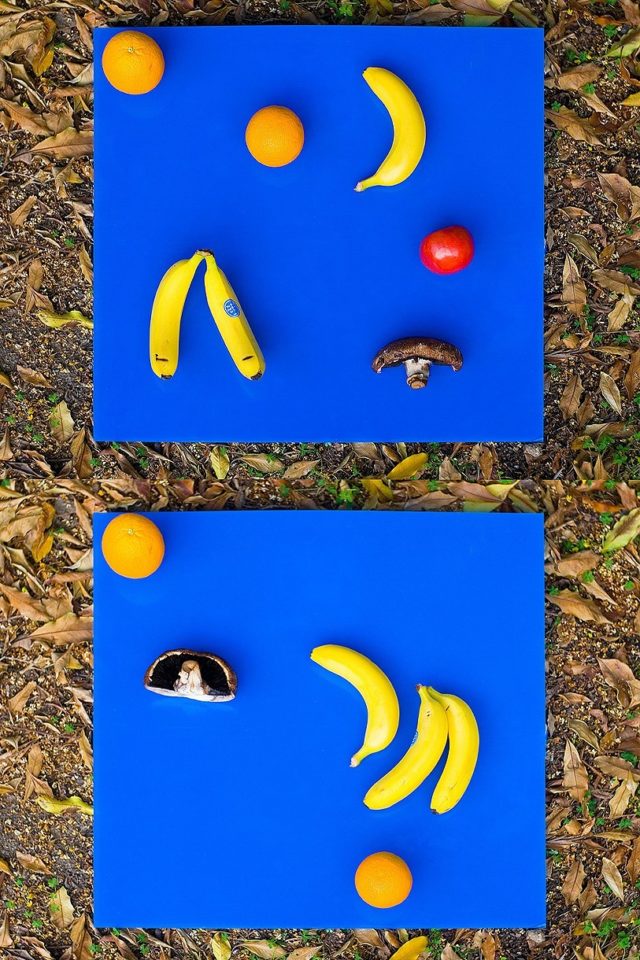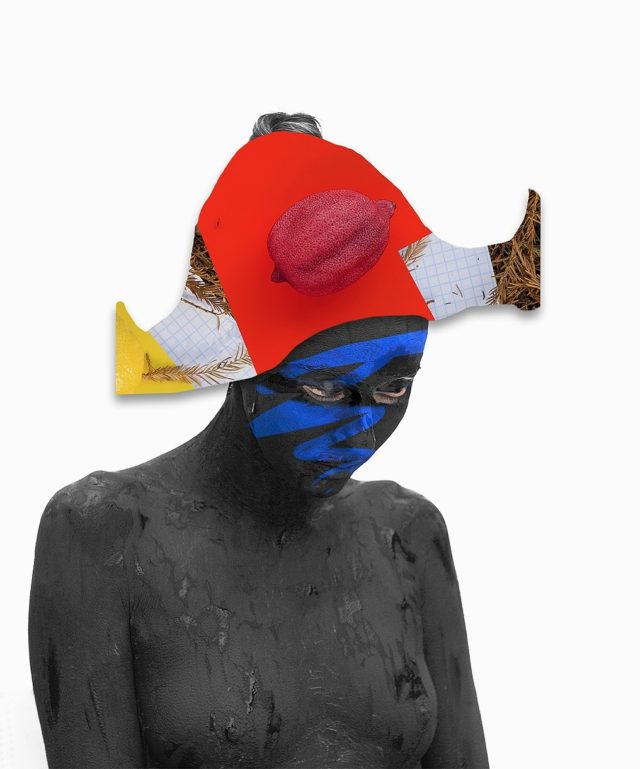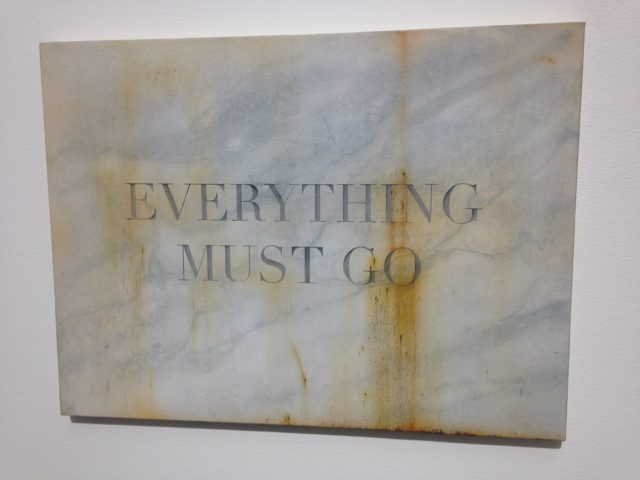Michael Anthony Farley (lifelong non-driver) is in Los Angeles, checking out the art scene and learning to love the city. His first week of adventures can be found here.
Wednesday 6/28

I tag along to an art advisory meeting at the vegan restaurant Cafe Gratitude, which serves up “mindfulness” along with quinoa bowls. Cafe Gratitude is one of the few places in L.A. that I know of, thanks to VICE’s hilarious (and hyperbolic) listicle “Reasons Why Los Angeles Is the Worst Place Ever”. Cafe Gratitude is just as ridiculous as had been promised (think menu items with names like “I am vibrant” and “I am grounded”, but the food is undeniably amazing. In the midst of our conversation about the difference between art advisory and art appraisal services, the waitress returns and completely straight-faced says “Oh, by the way, our question of the day is ‘what inspires you?’ Just something to think about…”
I bring up the VICE listicle, and joke about the number one reason it claims L.A. is terrible— “THERE IS DANGER EVERYWHERE”—after someone suggests we go on a nighttime hike in a rattlesnake and black widow infested canyon. In said canyon, an earthquake could theoretically set off a landslide and carnivores roam the landscape looking for prey. Everyone assures me, though, that the mountain lions don’t usually attack people.
“What do they eat?” I ask.
“In the Hollywood Hills? Mostly just pomeranians and coyotes.”
“Wait, you have coyotes here too?”
“Yes. Those will attack you.”
I sip my cleansing juice (“I am resilient”) and take solace that antioxidants are at least providing a modicum of protection from the air pollution.
Thursday 6/29

Ryosuke Yazaki, “Time Axis Second Edition”. 2017, “Dentatsu Fifth Edition,” 2016, and “Chijyo,” 2016.
Everyone I meet in L.A. uses the ingenious app See Saw—which maps art events—to plan their art-viewing itineraries. Unfortunately, my phone is too old to download it. Borrowing a friend’s in the back of a shared Uber, I hastily try to prioritize three openings to see in one night. I am delighted to see that they are all within a few blocks of Santa Monica Boulevard in West Hollywood. I plan to take the car to M+B Gallery and walk back eastward to catch the others.
The opening at M+B Gallery features a taco truck in their courtyard, which I am almost more excited about than the two solo shows inside (L.A.’s tacos almost put Mexico City to shame). One show, Ryosuke Yazaki’s Chijyo features seven small wooden abstract sculptures. They’re great—cheery and colorful and full of hand-carved character. They reference traditional Japanese woodworking techniques, but some read as lumpy mid-century modern forms. Others evoke alien architecture, glyphs, or strange landscapes. Their scale is humble and their surfaces feel like they’ve been lovingly worked-over for untold hours.

Phil Chang, “Replacement Ink for Epson Printers (Matte Black on Full Sheet 324303) on Hahnemühle Photo Matt Fibre, 2017″, Replacement Ink for Epson Printers (Matte Black on Full Sheet 324302) on Hahnemühle Photo Matt Fibre, 2017”, and “Replacement Ink for Epson Printers (Matte Black on Full Sheet 324301) on Hahnemühle Photo Matt Fibre, 2017”.
The other solo show, Phil Chang’s Matte Black Marks, Matte Black Pictures, is a letdown by comparison. Chang’s “investigation into what constitutes a picture in the inkjet era” comprises printer ink smeared on large sheets of printer paper. Each painting looks like it was completed in less than three minutes. The artspeak accompanying them is unbearable, and I leave with the impression that neither artist’s work is done a favor by being shown next to one another—decor-friendly process-based reflections on materiality don’t necessarily translate to products of the same calibre.
I look up the other galleries on Google Maps and realize how zoomed-out the See Saw map had been. What once appeared to be a 10-15 minute walk across charming West Hollywood is actually in the ballpark of an hour. I hop on a bus (which is far nicer, timely, and efficient than any Angelinos have told me to expect) and arrive at a gallery in a nondescript strip mall. From the looks of the blacked-out windows and locked door, I guess I have somehow missed the opening by at least 30 minutes. I am really bad at navigating Los Angeles.
Friday 6/30

Esteban Schimpf, “Arrangement of Fruit No. 6”, 2011.
I do a studio visit with the artist Esteban Schimpf, whose recent work grew out of “the realization that photography can be a cheater’s way of making paintings.” Esteban’s home and studio are in a lush enclave of craftsman-style houses near Highland Park. Floating between the studio space and garden, where a sunset pierces tropical flowers, I sip wine and think that many aspects of L.A. living outweigh the threat of bodily harm posed by wildlife and raging brush fires.

Esteban Schimpf” I thought California would be different No.3 (Bicorne),” 2014.
Esteban disagrees. He shows me an image of “I thought California would be different”—in which he has characteristically used a model “as a sculpture” and digitally collaged the image in post-production. He explains, “She’s thinking California sucks! It’s where dreams come to die!”
Most of Esteban’s work, however, is decidedly “pretty” without such overt traces of angst. He explains that he respects artists such as Matisse for their ability to make celebratory images even in awful political circumstances. Beauty and empathy are important for reminding humanity why we should fight to survive eras like the World Wars or the current administration.

Jesse Harris
We head to an opening in the Arts District, in a back-alley warehouse, that embraces a different strategy. True Lies, curated by Simon Cole at Night Gallery, is a chaotic reflection of political and social uncertainty—the era of “post-truth”. There are directionless protest signs by Jesse Harris and a creepy, nearly holographic grid of offset prints cataloging white, blonde-haired FOX News anchors by Kandis Williams. A square painting by Ian Davis depicts pink-suited military police endlessly patrolling dead-end off-ramps in a desert highway cloverleaf. It’s an apt metaphor for the tension and absurdity of contemporary geopolitics. Some works seem to just be an expression of pure rage and frustration. A series of waist-high totems by Brie Ruais, for example, appear to be mounds of clay kicked into the wall in some sort of outburst—a monument to grief, perhaps. Some of the other sloppier works don’t hold up as well, but overall the uneven show is a reflection of contemporary anxieties. It’s oddly comforting to know that nobody really knows what the fuck is going on or what to do about it.

Sayre Gomez, “Everything Must Go, Carrera Marble,” Acrylic on Canvas 2017.

Ian Davis, “Inland,” Acrylic and spray paint on linen,” 2014
[Weekend Update coming soon!]


Comments on this entry are closed.
{ 4 trackbacks }